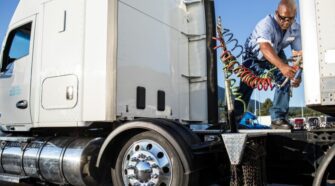

Section179 Tax Code
The Section 179 Tax Deduction is for fleet owners to grow their company through the purchase or lease of new equipment, such as a work truck. Section 179 of the IRS Tax Code allows businesses to get an immediate break on their tax burden by deducting the cost of equipment in the year it was purchased. This is different from capitalizing and then depreciating the asset, which allows for smaller deductions to be taken over time. For many fleet owners, the one-time deduction, such as that allowed by Section 179, is preferred not only because it offsets the expense of a commercial truck, but also because the entire purchase price is deducted from the year’s gross income.
50% Business Use
Any piece of property claimed as Section 179 must be used for business purposes at least 50% of the time during the first year it was put into service. In the case of a car, for instance, if you use the car for both business and personal use, it must be employed for your business at least 50% of the time.
Tangible Personal Property
Many types of property purchased for a business can qualify for Section 179 as long as it counts as tangible personal property. Land and land improvements do not qualify, nor does intellectual property. Examples of eligible property include:
- Machinery and equipment
- Office equipment and furniture
- Computers and “off-the-shelf” software
- Property attached to a building that is not a structural component, such as refrigerators, signs, and air conditioners or heaters
- Vehicles (with some restrictions—see below)
- Eligible improvements to non-residential buildings like roofs, security systems, and HVAC Acquired by Purchase
In order to claim Section 179, the property must have been acquired by a company via an exchange of money. Inherited property and gifts do not qualify for Section 179. Additionally, you cannot claim Section 179 if you purchased the property from a direct relative such as a spouse or sibling.
“Placed into Service”
Primarily, the point of Section 179 is to deduct the cost of equipment the same year it was placed into service. The IRS defines “placed into service” as the moment when a piece of property is ready and available for a specific use. That means that any equipment purchased during a calendar year, but not put in service before midnight on Dec. 31 no longer is eligible for Section 179.
In order to qualify for the tax season, the Commercial Truck must be purchased or financed between January 1 and December 31. You still have time to reduce your Taxable Income through Section 179 of the IRS Tax Code while enjoying a new commercial truck.
Bonus Depreciation
To incentivize large purchases, the IRS also offers businesses the Special Depreciation Allowance – or Bonus Depreciation. This can be used in conjunction with Section 179, and it allows businesses to deduct up to 100% of qualifying purchases in the first year. Once again, though, limits apply to many vehicles. Of note, the first-year limit on depreciation, Special Depreciation Allowance, and Section 179 deduction for vehicles acquired after September 27, 2017, and placed in service during 2020 remains $18,100. (NOTE: This number increases to $18,200 for 2021).
Unlike many parts of the IRS Tax Code, Section 179 is fairly straightforward. Deductions are allowed for the full purchase price of a qualifying vehicle in the year it is purchased. To take advantage of the deduction, you must include a brief description of the property, the total cost, and the amount of Section 179 the business is claiming for that particular asset on Part I of IRS Form 4562, Line 6. That means you attain the goal of reducing your Taxable Income and get a Commercial Truck in the process. Though Section 179 is a win-win, it’s always best to consult your tax professional before making a substantial business purchase. You can also calculate your deduction using this Section 179 calculator.
Want to learn more about the Section179 Tax Deduction? Check out this page on the IRS Website for more info.
Search our site
Related posts


Illinois Trucking Association Golf Outing 2023

Where to Buy a Kenworth Truck From MHC


